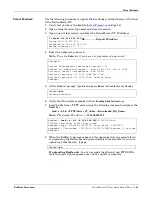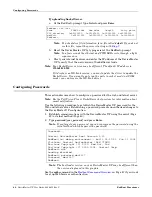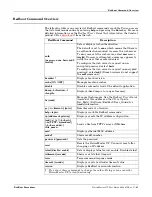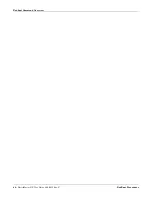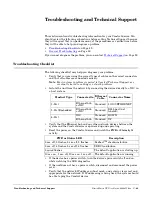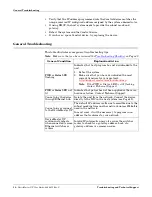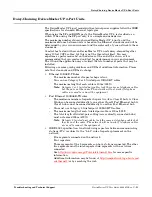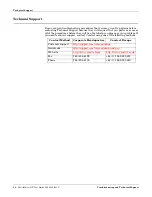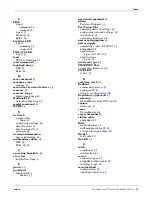
Troubleshooting and Technical Support
DeviceMaster UP User Guide
: 2000451 Rev. C
- 51
Daisy-Chaining DeviceMaster UP 4-Port Units
Daisy-Chaining DeviceMaster UP 4-Port Units
The DeviceMaster UP 4-port models with external power supplies follow the IEEE
specifications for standard Ethernet topologies.
When using the
UP
and
DOWN
ports, the DeviceMaster UP 4 is classified as a
switch. When using the
UP
port only, it is a simple end node device.
The maximum number of daisy-chained DeviceMaster UP 4 units, and the
maximum distance between units is based on the Ethernet standards and will be
determined by your own environment and the conformity of your network to these
standards.
Comtrol has tested with seven DeviceMaster UP 4 units daisy-chained together
using 10 foot CAT5 cables, but this is not the theoretical limit. You may
experience a performance hit on the devices at the end of the chain, so it is
recommended that you overload and test for performance in your environment.
The OS and the application may also limit the total number of ports that may be
installed.
Following are some quick guidelines and URLs of additional information. Please
note that standards and URLs do change.
•
Ethernet 10BASE-T Rules
-
The maximum number of repeater hops is four.
-
You can use Category 3 or 5 twisted-pair 10BASE-T cables.
-
The maximum length of each cable is 100m (328ft).
Note:
Category 3 or 5 twisted pair cables look the same as telephone cables
but they are not the same. The network will not work if telephone
cables are used to connect the equipment.
•
Fast Ethernet 100BASE-TX rules
-
The maximum number of repeater hops is two (for a Class II hub). A Class
II hub can be connected directly to one other Class II Fast Ethernet hub. A
Class I hub cannot be connected directly to another Fast Ethernet hub.
-
You must use Category 5 twisted-pair 100BASE-TX cables.
-
The maximum length of each twisted-pair cable is 100m (328ft).
-
The total length of twisted-pair cabling (across directly connected hubs)
must not exceed 205m (672ft).
Note:
Category 5 twisted pair cables look the same as telephone cables but
they are not the same. The network will not work if telephone cables
are used to connect the equipment.
•
IEEE 802.3 specification: A network using repeaters between communicating
stations (PCs) is subject to the “5-4-3” rule of repeater placement on the
network:
-
Five segments connected on the network.
-
Four repeaters.
-
Three segments of the 5 segments can have stations connected. The other
two segments must be inter-repeater link segments with no stations
connected.
See
http://www.optronics.gr/Tutorials/ethernet.htm
for more specific
information.
Additional information may be found at
http://compnetworking.about.com/
or by searching the web.









